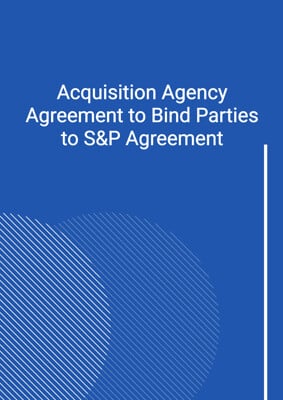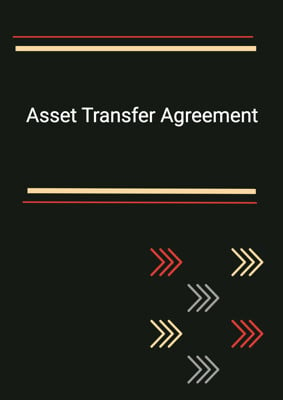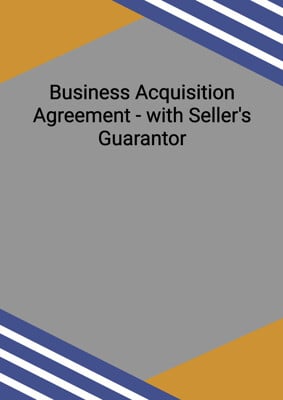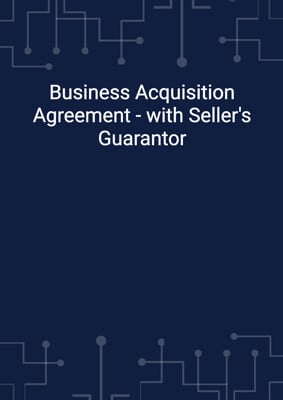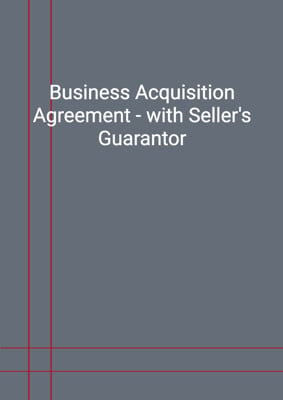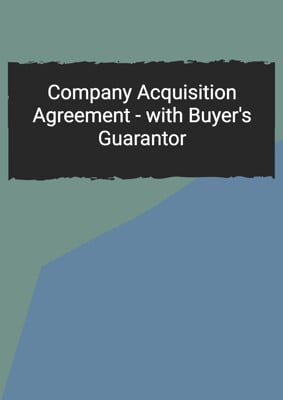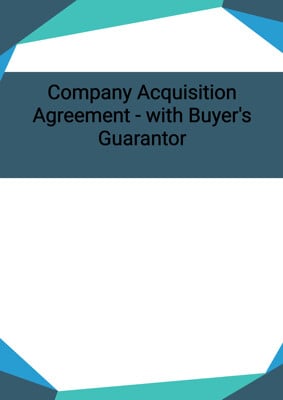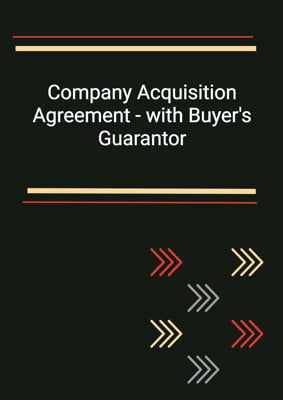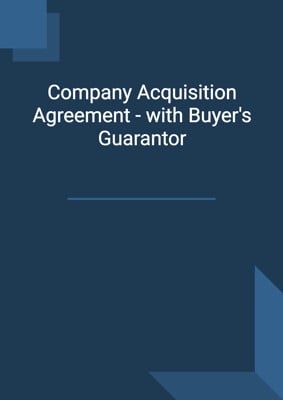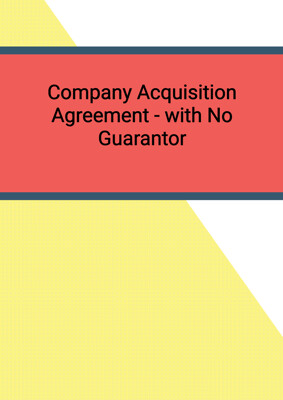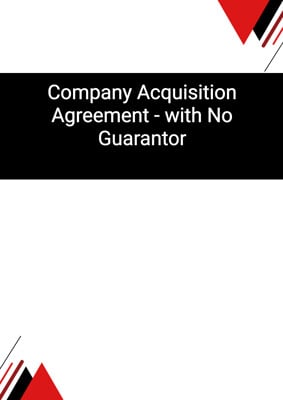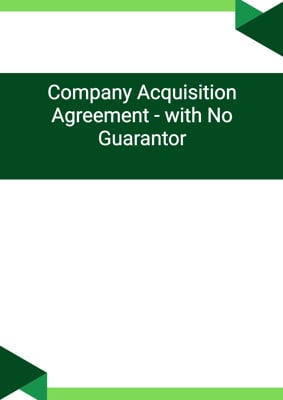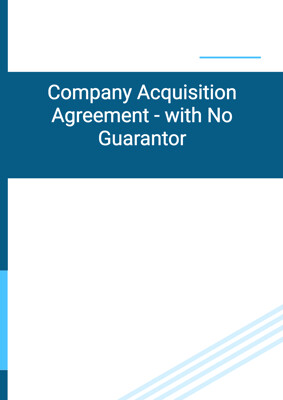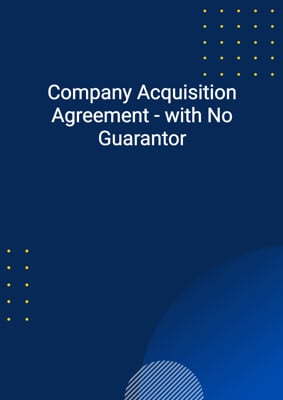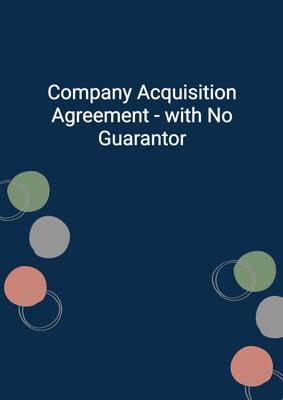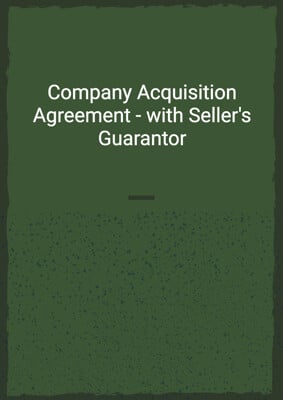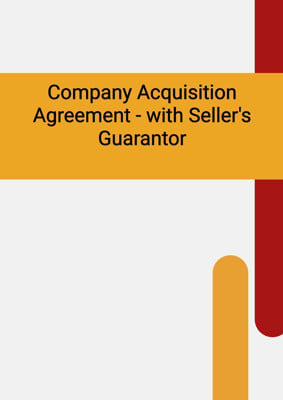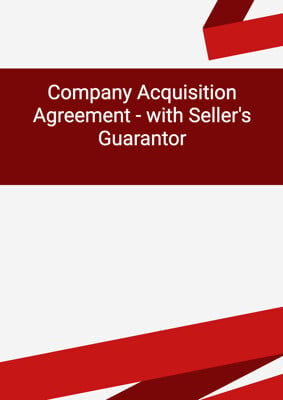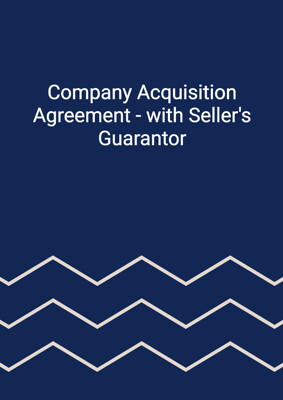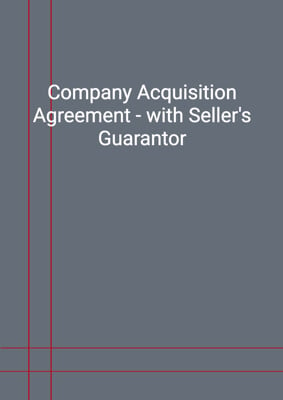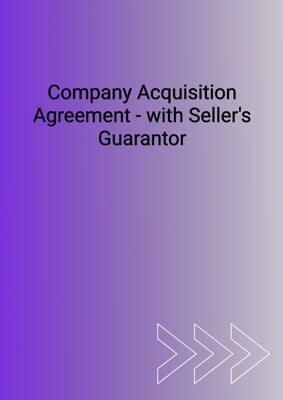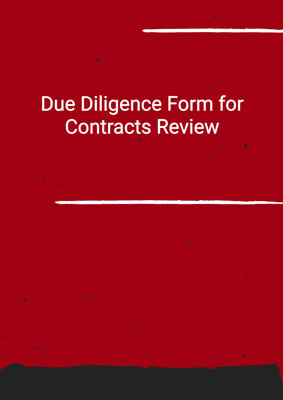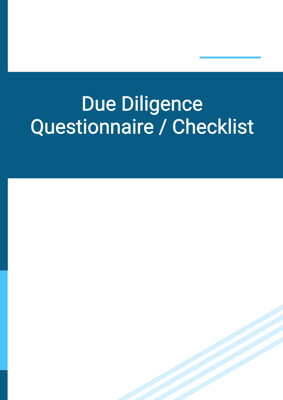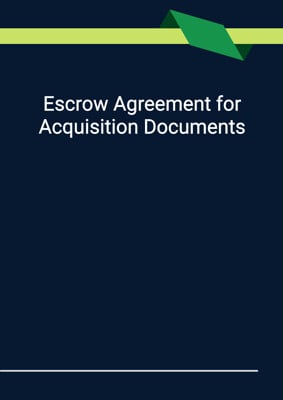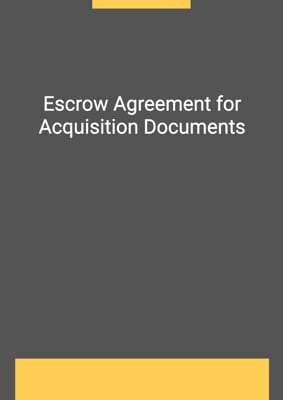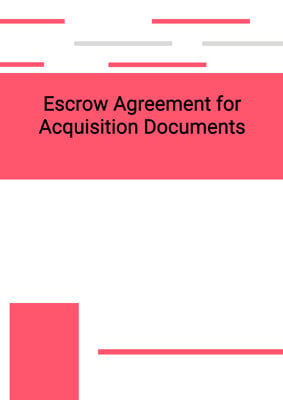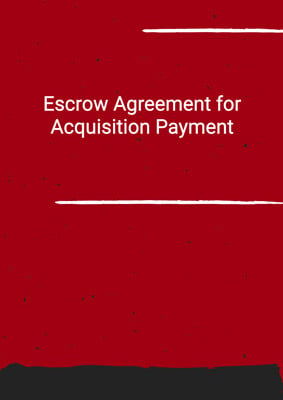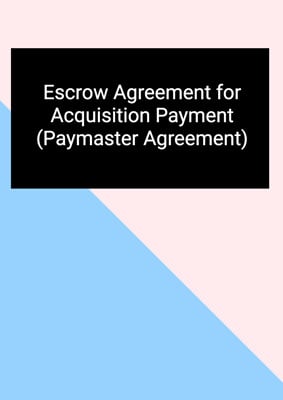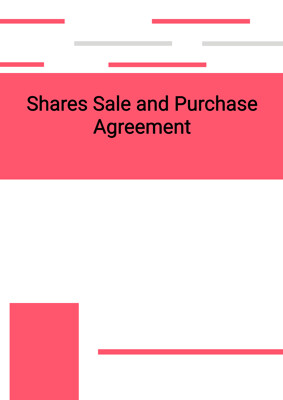How to Tailor the Document for Your Need?
01
Create Document
Fill in the details of the parties. You can click the "Fill with Member’s Information" button to complete it with information saved to your account.
02
Fill Information
Please fill in any additional information by following the step-by-step guide on the left hand side of the preview document and click the "Next" button.
03
Get Document
When you are done, click the "Get Document" button and you can download the document in Word or PDF format.
04
Review Document
Please get all parties to review the document carefully and make any final modifications to ensure that the details are correct before signing the document.
Document Preview
Document Description
The Company Acquisition Agreement - with Buyer's Guarantor is a legal document that outlines the terms and conditions of the acquisition of a company. The agreement is entered into between the seller, the buyer, and the guarantor. The seller is the current owner of the company, while the buyer is the party interested in purchasing the company. The guarantor provides a guarantee for the buyer's performance of their obligations under the agreement.
The agreement begins with an interpretation section, which defines the key terms used throughout the document. It also includes schedules that provide additional details, such as the details of the company and its subsidiaries, the warranties provided by the seller, and the completion accounts.
The sale of the shares and the price are specified in Section 2 of the agreement. The seller agrees to sell, and the buyer agrees to purchase, the shares of the company. The total price payable by the buyer to the seller is determined based on the agreed consideration, which can be a fixed amount paid in cash, shares, or a combination of both. The agreement also specifies the conditions that need to be fulfilled before the completion of the sale and purchase.
Section 4 of the agreement outlines the pre-completion undertakings of the seller. These include ensuring that the business is conducted in the ordinary and usual course, preserving and protecting the business assets, allowing the buyer's representatives access to the books and records of the company, and making prompt disclosure of any relevant information.
The completion of the sale and purchase is covered in Section 5 of the agreement. It specifies the actions and documents that need to be delivered by the seller to the buyer on completion, such as the transfers of shares, share certificates, and statutory books. It also addresses the payment of the price and the allocation of consideration shares, if applicable.
Section 6 of the agreement deals with the completion accounts, which are prepared after completion to determine the net tangible assets of the company. The completion accounts are prepared in accordance with the agreed accounting policies and procedures.
The post-completion undertakings of the seller are outlined in Section 7. These include the repayment of connected trading indebtedness, obtaining the release of any connected guarantees, and providing transitional services to the buyer for a specified period.
Section 8 of the agreement imposes restrictions on the seller, such as non-competition and non-solicitation obligations, to protect the interests of the buyer after completion.
The warranties provided by the seller are set out in Schedule 4 of the agreement. These warranties represent the seller's representations and assurances regarding the company and its affairs.
The agreement also includes provisions on limitations of claims, governing law and jurisdiction, notices and service, announcements, costs, severability, and waivers. It further addresses the rights and remedies of the buyer, the assignment of rights under the agreement, and the indemnity provided by the guarantor.
Overall, the Company Acquisition Agreement - with Buyer's Guarantor is a comprehensive legal document that covers all aspects of the acquisition process and ensures that both parties understand their rights and obligations.
How to use this document?
To use the Company Acquisition Agreement - with Buyer's Guarantor, follow these steps:
1. Review the agreement: Read through the entire agreement to familiarize yourself with its contents and understand the terms and conditions.
2. Customize the agreement: Modify the agreement as necessary to reflect the specific details of the acquisition, such as the names and addresses of the parties, the consideration amount, and any additional provisions required.
3. Seek legal advice: Consult with a legal professional to ensure that the agreement complies with applicable laws and regulations and adequately protects your interests.
4. Negotiate and finalize the agreement: Discuss any changes or amendments to the agreement with the other parties involved and reach a mutually acceptable agreement. Once finalized, ensure that all parties sign the agreement.
5. Fulfill the conditions to completion: Work towards fulfilling the conditions specified in the agreement, such as obtaining shareholder approval and delivering written consents.
6. Prepare completion accounts: If applicable, prepare the completion accounts in accordance with the agreed accounting policies and procedures.
7. Complete the sale and purchase: On the completion date, deliver the necessary documents and payments as specified in the agreement. Ensure that all parties fulfill their obligations as outlined in the agreement.
8. Post-completion obligations: After completion, fulfill any post-completion undertakings, such as repayment of connected trading indebtedness and provision of transitional services.
9. Comply with restrictions: Adhere to the non-competition and non-solicitation restrictions specified in the agreement.
10. Monitor warranties: Monitor the warranties provided by the seller and take appropriate action if any breaches occur.
11. Seek legal remedies if necessary: If any disputes or breaches arise, consult with a legal professional to determine the appropriate legal remedies and actions to take.
Please note that this guidance is for informational purposes only and should not be considered legal advice. It is recommended to consult with a legal professional for specific advice tailored to your situation.
Not the right document?
Don’t worry, we have thousands of documents for you to choose from:


